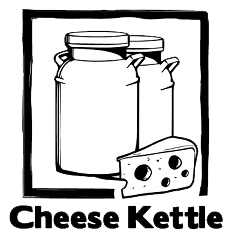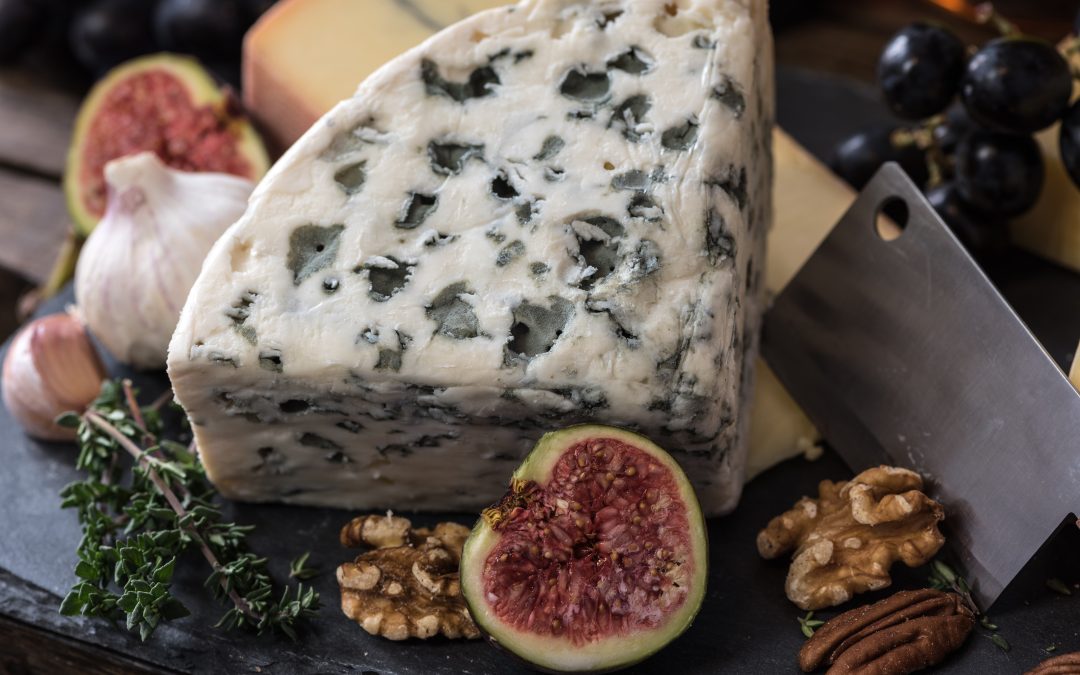While some people worry that cheese is high in fat, sodium and calories, cheese is actually a whole food. It provides beneficial nutrients like calcium for bone and teeth health, protein for muscle building, zinc which promotes wound healing and immunity, vitamin A for eye and skin health, vitamin B-12 for healthy nerves and blood cells, phosphorus which contributes to bone formation and riboflavin for growth and overall good health. There are claims that eating cheese may even aid in weight loss and prevent heart disease.
But we must say, NOT ALL CHEESE ARE CREATED EQUAL. Certain types, like processed cheese, may contain added oil, dyes and added sugar. This doesn’t mean you have to say goodbye to cheese. Knowing which cheeses are loaded with key nutrients will help you in making healthful choices. To help you, we’ve listed the healthiest types of cheese.
10 Healthiest Cheeses

1. Cottage Cheese
Made from fresh cow’s milk, cottage cheese is packed with protein. Half a cup of this cheese can already give you 15 to 16 grams of protein. Several brands also contain live active probiotic strains. Cottage cheese also contains selenium, an antioxidant that helps reduce risk of chronic inflammation.
Since cottage cheese is high in protein but low on calories, it is a great cheese for people trying to cut some pounds off their weight. Eating high protein food like cottage cheese can increase feelings of fullness, thus contributing to the decrease of one’s overall calorie intake.
Cottage cheese can be used on a variety of food like yogurt, fruits, toast, crackers and dips.
Nutrition Facts
Calories 100 calories per ½ cup
Fat 2.5 g
Carbohydrates 4 g
Sodium 390 mg
Protein 16 g
Calcium 200 mg
 2. Goat Cheese
2. Goat Cheese
Goat cheese has less lactose compared to cheeses made from cow’s milk, making it a good option for people who are lactose intolerant. It also contains A2 casein, which may be less likely to cause gastrointestinal discomfort than the proteins in cow’s milk. This tangy cheese is high in protein. With over 5 grams of protein per ounce, you can use goat cheese so you can trim down on the meat on your next meal. It also has high vitamin A, containing about 10% of the recommended dietary intake.
Goat cheese makes a great substitute for cream cheese. You can spread it on your toasts and crackers.
Nutrition Facts
Calories 108 calories per one ounce serving
Fat 9 g
Carbohydrates 0 g
Sodium 190 mg
Protein 7 g
Calcium 200 mg
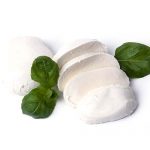 3. Mozzarella
3. Mozzarella
Mozzarella is a soft cheese with high moisture content. It requires less salt than harder aged cheese, making it lower in sodium content. Mozzarella also contains strains of Lactobacillus casei and Lactobacillus fermentum which act as probiotics. It is also high in Calcium, containing 200 mg of this mineral per serving.
Aside from its famous association with pizza, you can also use mozzarella for salads and pasta.
Nutrition Facts
Calories 80 calories per one ounce serving
Fat 6 g
Carbohydrates 1 g
Sodium 150 mg
Protein 6 g
Calcium 200 mg
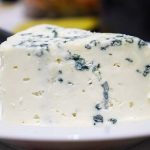 4. Blue Cheese
4. Blue Cheese
Aged with cultures of mold Penicillium, blue cheese has distinct blue or green veins, a pungent smell and a tangy flavor. Despite its high sodium content, blue cheese contains more Calcium compared to other cheese. Stilton variety has high levels of vitamins K, which helps the body make protein for healthy bones and tissues.
Blue cheese pairs exceptionally well with fruits, nuts and wine. It makes a stunning addition to the cheese board.
Nutrition Facts:
Calories 100 calories per one ounce serving
Fat 6 g
Carbohydrates 1 g
Sodium 325 mg
Protein 6 g
Calcium 150 mg
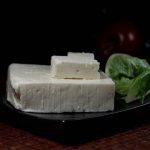 5. Feta
5. Feta
This Mediterranean cheese adds a punch of flavor to salads. Feta is low on calories compared to most cheeses. It also provides conjugated linoleic acid, which helps retain lean muscle mass and control type 2 diabetes. Feta is usually soaked in brine, so it has high sodium content. It is best to consume this cheese in moderation.
Feta is a remarkably versatile cheese. You can crumble it on salads or use it with roasted vegetables, soup and pasta.
Nutrition Facts
Calories 80 calories per one ounce serving
Fat 6 g
Carbohydrates 1 g
Sodium 323 mg
Protein 4 g
Calcium 140 mg
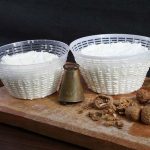 6. Ricotta
6. Ricotta
Aside from being a great source of calcium, ricotta contains a range of essential nutrients that can help you meet your dietary requirements. It is a low fat and low calorie cheese. Ricotta is an Italian word that means recooked. The whey portion of other cheese is reheated to bring the whey protein together. Whey protein contains essential amino acids that our bodies need. It has high leucine, which assists in muscle regeneration.
You can use ricotta for lasagna, casseroles and pasta.
Nutrition Facts
Calories 171 calories per ½ cup serving
Fat 6 g
Carbohydrates 6g
Sodium 136 mg
Protein 14 g
Calcium 255 mg
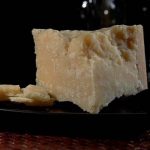 7. Parmesan
7. Parmesan
Parmesan cheese is a good source of protein and calcium. An ounce of this cheese packs about 10 g of protein. The aging process of parmesan reduces the lactose content of the cheese, making it one of the best options for people sensitive to dairy. Parmesan also contains lactic acid bacteria that contribute to gut health.
Parmesan is best served grated on pasta. It can also be used as an ingredient in mashed potatoes, macaroni and cheese, casseroles and shepherd’s pie.
Nutrition Facts
Calories 111 calories per ½ cup serving
Fat 7 g
Carbohydrates 1 g
Sodium 333 mg
Protein 10 g
Calcium 336 mg
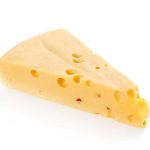 8. Swiss
8. Swiss
Swiss cheese contributes to a balanced diet. Aside from vitamin A, b-12 and calcium, Swiss cheese contains valine and isoleucine, which helps control blood sugar and boosts energy and endurance.
Swiss cheese melts well, so it’s a great cheese to use in making sauces and dips. It can also be served in cubes with meat, chopped vegetables or bread.
Nutrition Facts
Calories 111 calories per ounce of serving
Fat 9 g
Carbohydrates 0.5 g
Sodium 53 mg
Protein 8 g
Calcium 254 mg
 9. Brie
9. Brie
Brie is a good protein source. One ounce of Brie has protein equivalent to one medium egg. It is also nutrient dense, packed with vitamins A, B2 and B12 and high amount of tryptophan, an amino acid that promotes better sleep. Brie is high in fat so a moderate amount can be an enjoyable part of a healthy diet.
You can add brie to sandwiches and salads. It also goes well with toasted nuts and wine or champagne, making it a wonderful addition to the cheese board.
Nutrition Facts:
Calories 100 calories per ounce of serving
Fat 9 g
Carbohydrates 0.5 g
Sodium 120 mg
Protein 4 g
Calcium 184 mg
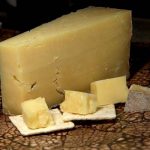 10. Cheddar
10. Cheddar
Cheddar contains a high concentration of essential nutrients, particularly calcium and protein. An ounce of it provides 6% of your daily vitamin A needs and 14% of your Phosphorus RDI. It also contains zinc, selenium and riboflavin. Some cheddar brands are fortified with vitamin E, a powerful antioxidant that helps protect eyesight. Cheddar is relatively high in sodium, so it is best consumed with moderation.
This cheese has a variety of culinary uses. It can be used in soups, sauces, dips and melted on snacks.
Nutrition Facts:
Calories 114 calories per 1 ounce serving
Fat 9 g
Carbohydrates 0 g
Sodium 180 mg
Protein 7 g
Calcium 201 mg
Cheese is a great source of calcium, protein and other nutrients. Some types of cheese promote gut health and weight loss. However, just like any other healthy food, eating it in moderation is advised for a well-balanced diet.
Learn more about how cheese can benefit your health with these articles:
